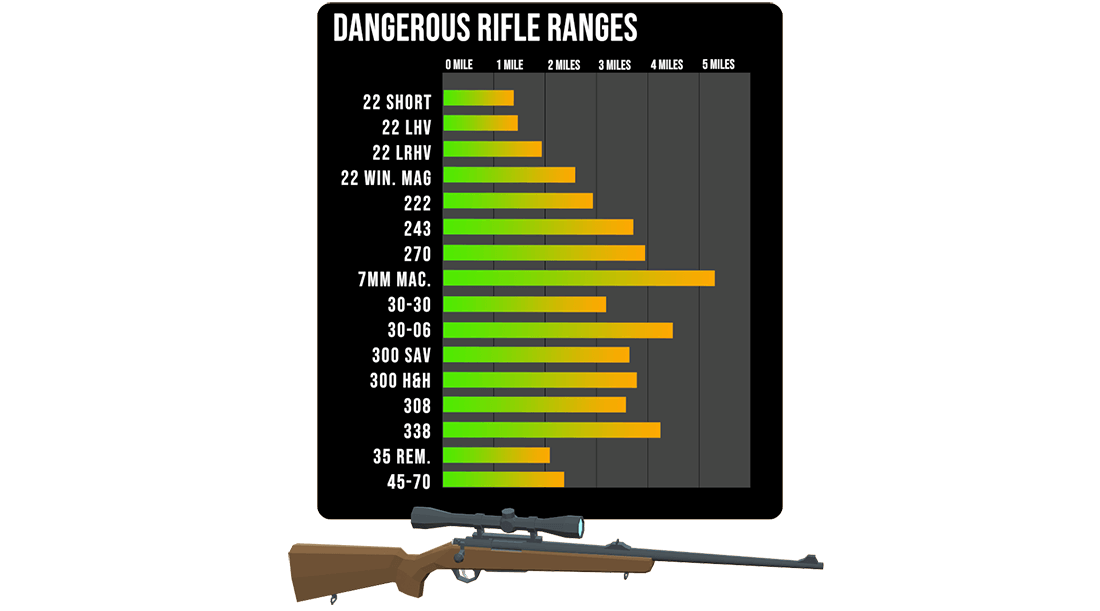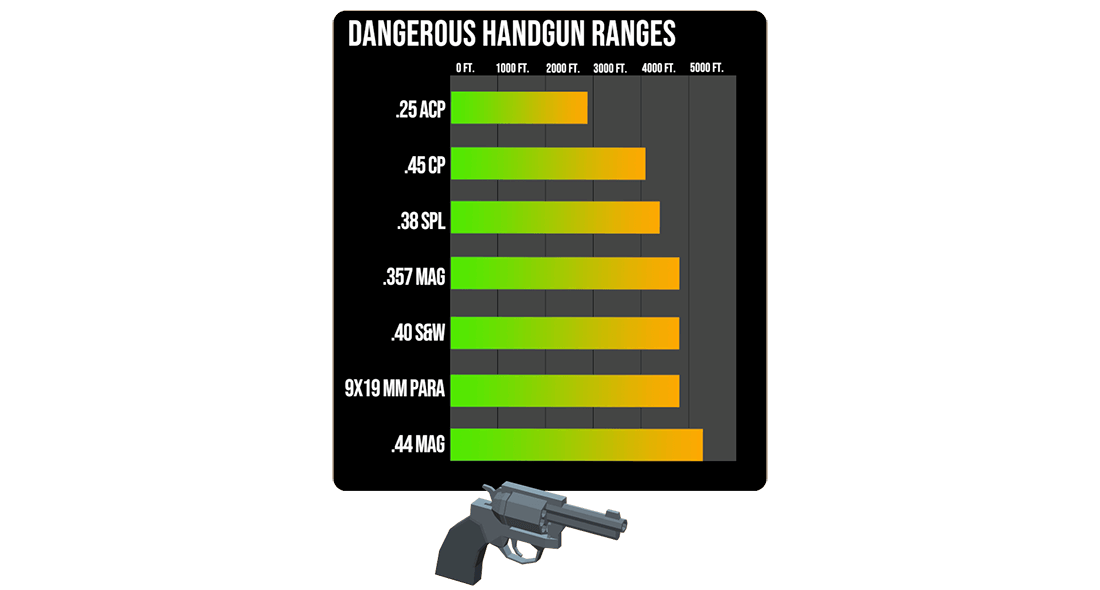How far can a bullet travel?
Rifle ranges
Many are unaware of the surprising distances bullets from firearms can travel. A .22 caliber bullet can reach 1 1/2 miles, while a 9mm bullet may even travel up to three miles. Shots cover shorter distances, typically between 200 and 600 yards.
When it comes to how far bullets can travel, there are several factors that must be considered:
- Muzzle Velocity. The speed at which a bullet leaves the barrel of the firearm, known as muzzle velocity, is a critical factor. Higher muzzle velocities generally result in longer ranges
- Bullet Weight and Shape. The weight and aerodynamic shape of the bullet play a significant role. Heavier bullets may retain more energy and stability over longer distances. Additionally, bullets with streamlined shapes, such as boat-tail designs, experience less air resistance, improving their range.
- Ballistic Coefficient. This is a measure of how well a bullet can overcome air resistance. A higher ballistic coefficient indicates better aerodynamic efficiency, allowing the bullet to maintain velocity over longer distances.
- Atmospheric Conditions. Factors such as air density, temperature, and humidity can influence a bullet's trajectory. Higher altitudes, lower air density, and extreme temperatures can affect the bullet's flight path and range.
- Barrel Length. The length of the firearm's barrel can impact the bullet's velocity. Generally, longer barrels provide higher muzzle velocities, thus contributing to longer effective ranges.
- Bullet Spin. The rifling inside the barrel imparts spin to the bullet, stabilizing its flight. The twist rate of the rifling affects how quickly the bullet spins. The right twist rate is necessary for stability and accuracy at various distances.
- Altitude and Gravity. Gravity has a constant effect on the bullet, pulling it downward. The altitude of the shooting location can influence the bullet's drop due to variations in gravitational forces.
- Wind Conditions.Wind is a significant external factor affecting bullet trajectory. Crosswinds can push the bullet off course, reducing accuracy and effective range.
- Bullet Design and Construction. Factors such as the bullet's shape, construction (e.g., hollow point, full metal jacket), and intended purpose (e.g., long-range precision, stopping power) can impact its performance at different ranges.
Here are some examples of how far projectiles can travel:
- A .22 caliber bullet can reach over 1 ½ miles.
- Centerfire bullets have the potential to travel for several miles.
- Small shot can cover distances of 200-350 yards.
- Larger shot can reach over 600 yards.
- Slugs have the capability to travel distances exceeding 800 yards.


